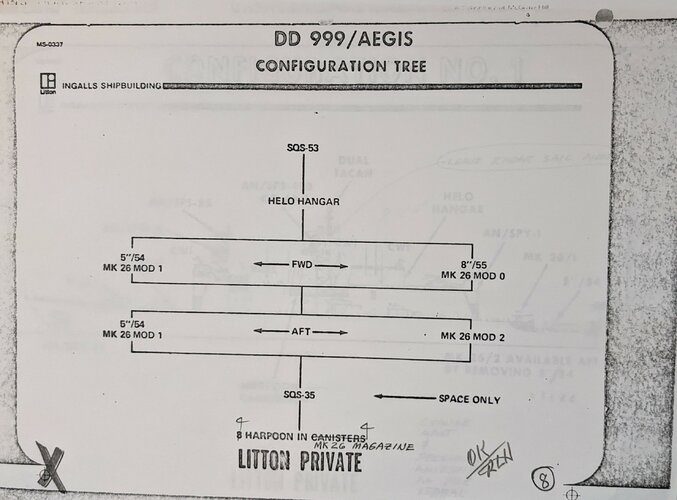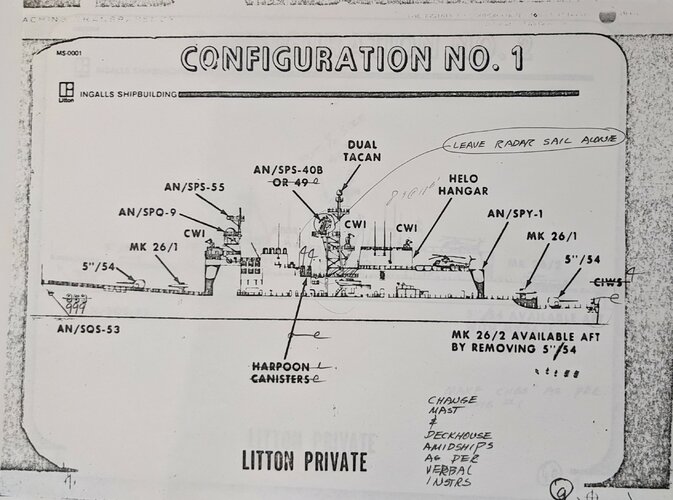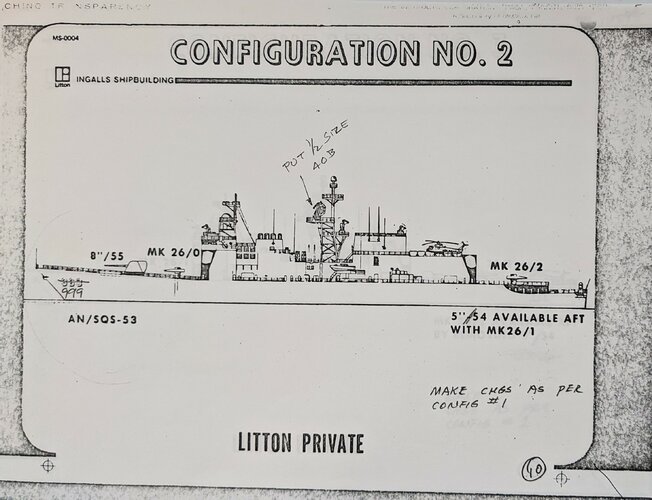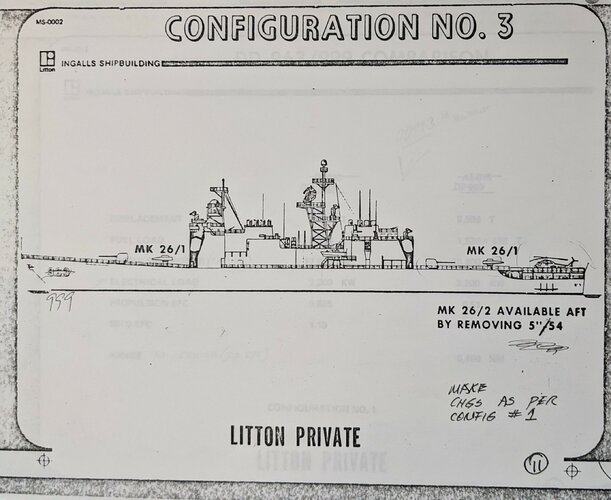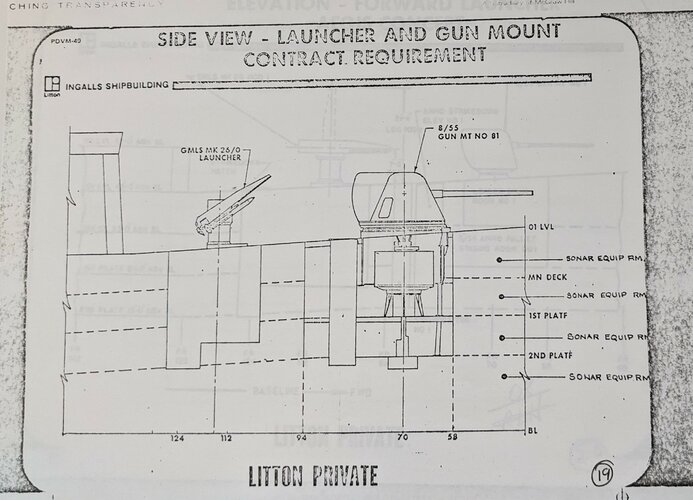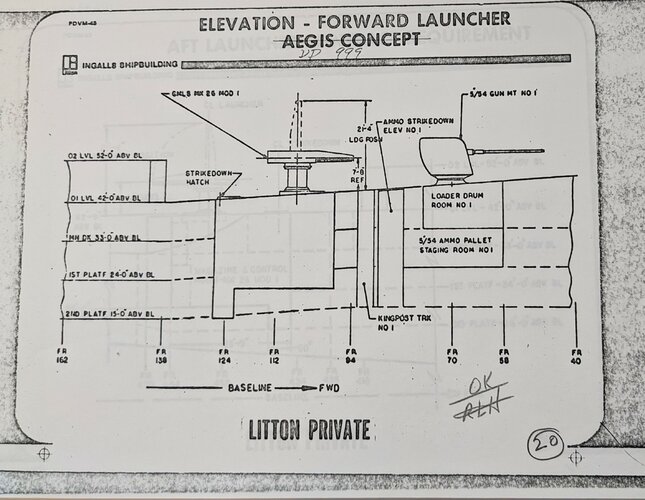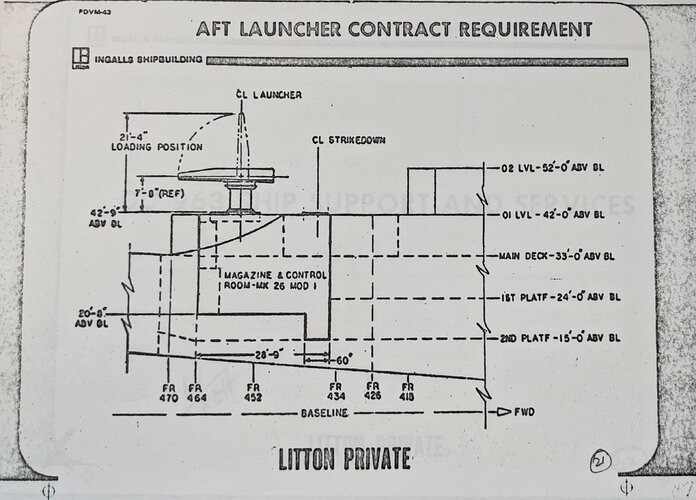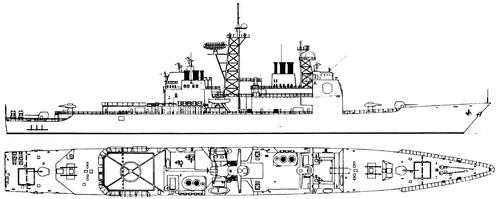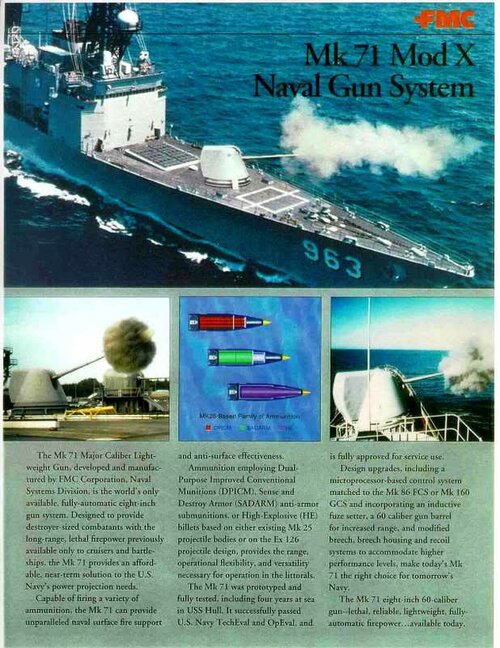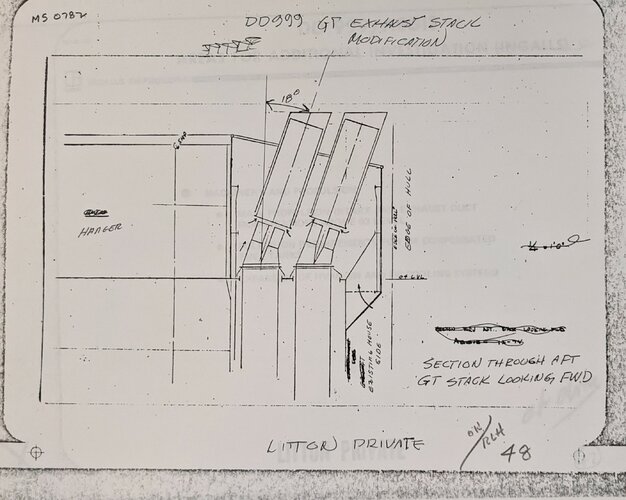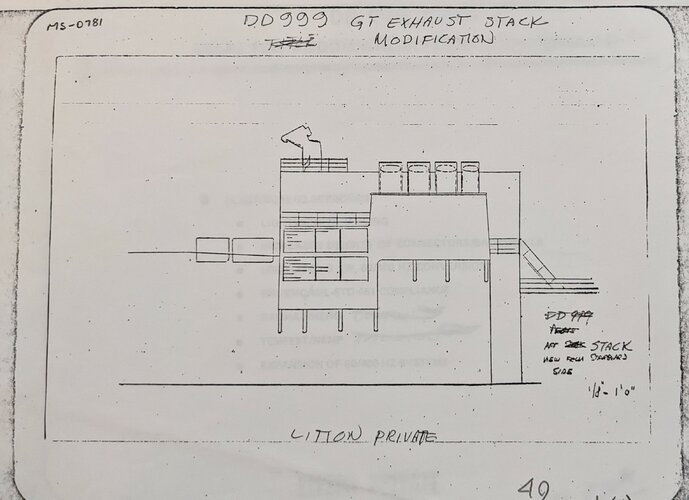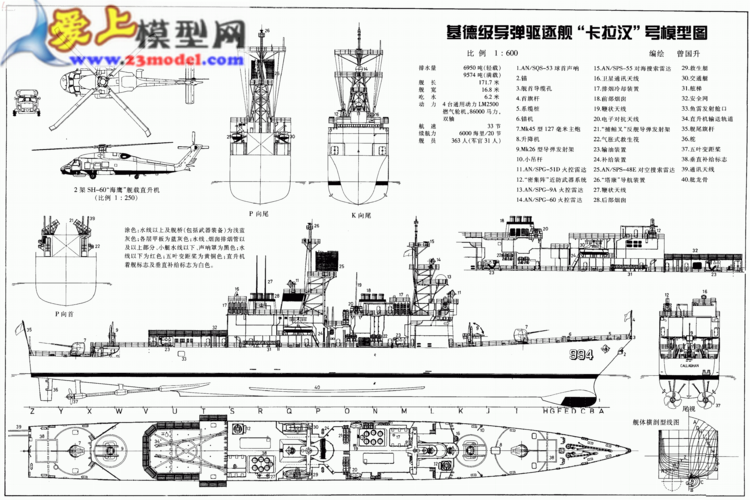- Joined
- 16 April 2008
- Messages
- 8,636
- Reaction score
- 11,071
Found another interesting document in my files this past weekend – a fairly early (March/April 1975) presentation on the Litton feasibility study for a Spruance-derived AEGIS destroyer that eventually became the DDG 47, then CG 47 Ticonderoga class. At this point, this design was being referred to as the DD 999/AEGIS configuration, a designation that I have never seen anywhere else.

If you are wondering why they were using DD 999, at this time the Imperial Iranian Navy (IIN) was planning to build six ships, which the USN designated DD 993 through 998 for record-keeping purposes. The four that were ultimately ordered later became the DDG 993 Kidd class in USN service. (DD 997 was eventually recycled for the proposed DDH that became Hayler and DD 998 may have also been recycled for the second DDH that Congress authorized but never funded.)
The Iranian DD 993s essentially followed the plan for an AAW Conversion of the baseline DX Spruance class, with some Iranian climatic changes added. In the edits, the term “DD 963 Conversion” has largely been replaced with “IIN DD 993”, and there are some notes that work on the IIN design could cover some of the costs of the DD 999/AEGIS version as well, because there were some commonalities.
Note: these slides are a marked-up draft, showing changes requested before the slides were finalized for presentation. And quality is not great – these are photocopies of transparencies that someone then marked up and photocopied again. And then I photographed them using a hand-held phone camera. Best I can do at the moment. I'm not worried about the Litton marking because it's nearly 50 years old at this point and of only academic interest.
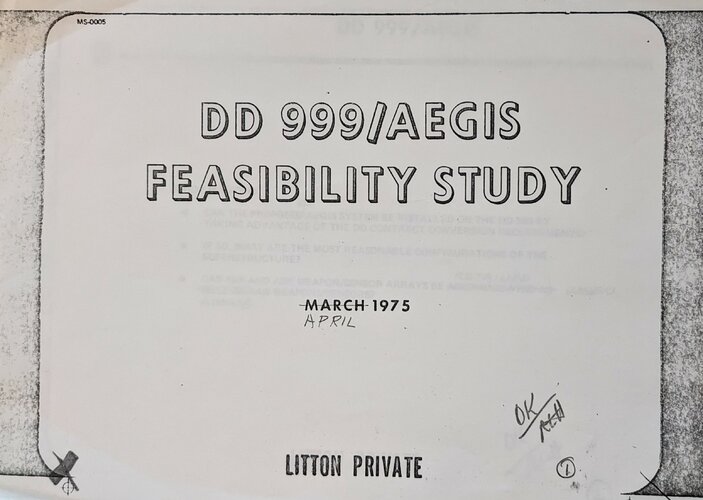
If you are wondering why they were using DD 999, at this time the Imperial Iranian Navy (IIN) was planning to build six ships, which the USN designated DD 993 through 998 for record-keeping purposes. The four that were ultimately ordered later became the DDG 993 Kidd class in USN service. (DD 997 was eventually recycled for the proposed DDH that became Hayler and DD 998 may have also been recycled for the second DDH that Congress authorized but never funded.)
The Iranian DD 993s essentially followed the plan for an AAW Conversion of the baseline DX Spruance class, with some Iranian climatic changes added. In the edits, the term “DD 963 Conversion” has largely been replaced with “IIN DD 993”, and there are some notes that work on the IIN design could cover some of the costs of the DD 999/AEGIS version as well, because there were some commonalities.
Note: these slides are a marked-up draft, showing changes requested before the slides were finalized for presentation. And quality is not great – these are photocopies of transparencies that someone then marked up and photocopied again. And then I photographed them using a hand-held phone camera. Best I can do at the moment. I'm not worried about the Litton marking because it's nearly 50 years old at this point and of only academic interest.

